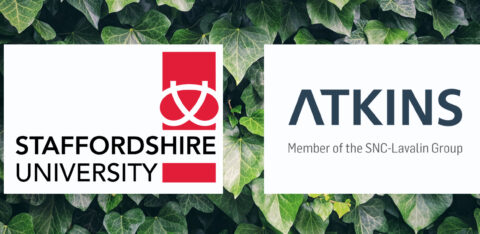PM10 Research: reducing pollution with Green Screens
4 September 2025Our Mobilane Green Screens have been developed with security, air-cleansing and aesthetics as their core benefits. It is vital to maintain continuous development of our products and to investigate and understand their use and scope in landscaping and construction projects. In this way, we can continue to offer the most effective natural solutions to improve a landscape’s surroundings, air quality and overall environment.
In partnership with another leading authority in design and engineering within the built environment, Atkins, we installed Mobilane Green Screens, woven and intertwined with ivy, in a Birmingham City Centre location at the end of April 2015. We did this to investigate whether our hedges contribute to reducing air pollution.
Atkins & Mobilane Research
In this research project conducted in 2015, Mobilane Green Screens fitted to existing pedestrian guarding were piloted by Atkins with funding by the Southside Business Improvement District in Birmingham. Their installation was primarily to improve the visual amenity of the A38 (Bristol Street), as well as making a contribution to improving the air quality of the area.
Results
The Green Wall Centre at Staffordshire University provided expertise in the visualisation of particulates on leaves to demonstrate that the ivy screens were capable of capturing air-borne pollutants. In this study, the research team examined leaves for contamination by PM10 to PM1.0; smaller particulates can be visualised but would require more resources than necessary for this first evaluation of Mobilane Green Screen effectiveness.
As a baseline comparison, ‘clean’ leaf samples were taken from a nursery in a rural environment growing Mobilane Green Screens, and compared with the particulate loads on Mobilane Green Screens planted along the A38.
Sample ivy leaves were taken before the screens were installed and then again, one month later. The differences in captured PM10 and PM2.5 particles were then studied, comparing the levels before exposure to pollution in this busy urban environment – and then one month after installing the Mobilane Green Screens.
What is PM10?
Particle pollution, also called particulate matter or PM, is a mixture of solids and liquid droplets floating in the air. Some particles are released directly from a specific source, while others form in complicated chemical reactions in the atmosphere. Particles come in a wide range of sizes.
Particles less than or equal to 10 micrometers in diameter are so small that they can get into the lungs, potentially causing serious health problems. Ten micrometers is less than the width of a single human hair. Coarse dust particles (PM10) are 2.5 to 10 micrometers in diameter.
Conclusion
As can be clearly seen in the photos above, there are significantly more polluted particles visible in the leaves in the photo on the right, the leaves that have been exposed along the side of the road. Analysis of various test locations shows that the Mobilane Ready-made Hedge captures 40-60% of (ultra)fine dust. More experiments are needed to statistically validate these results, but the initial findings are of great importance in the search for a natural way to combat air pollution in urban areas.
Download the full white paper of preliminary findings: Mobilane Green Screen Atkins PM10 Research BID Final Report (PDF – July 2015)




